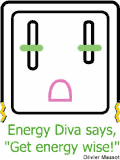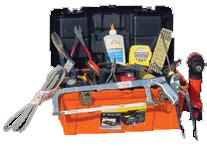- Publications:
- Newsletter:
- How-To Tutorials:
- Consumer Guides:
- Related:

Image by Robert Ubell
Publishers:
Accurate Building Inspectors ©
Division of Ubell Enterprises, Inc.
1860 Bath Avenue
Brooklyn, NY 11214
voice – [718] 265.8191
toll free voice – [800] 640.8285
fax – [718] 449.7190
Lawrence J. Ubell *
- President
Alvin Ubell **
- Founder, Vice President
Matthew Barnett *
- Senior Inspector
Estelle R. Ubell
- Sec. Treasurer
Emily Hoffman
- Editor & Broadcaster, WNYC & WQXR
Contributors:
HON. JULES L. SPODEK, (RET)
Robert H. Wolff, Esq. of Rosenberg,
Minc, Falkoff
& Wolff, LLP
Ari Saltz, of GFI Mortgage Bankers, Inc.
Stanley Turkel, MHS, ISHC
Bertrum Herman, Esq.
Howard Kurtzberg, Esq.
Sebastian M. D'alessandro, RA
Terrence E. O'Neal, RA, AIA
* Licensed in: New York - New Jersey
** Licensed in: NJ
Contribute:
If there is a subject that you would like to see discussed or an article that you would like to contribute to be featured
in The Gotham City Inspector©, please forward your comments to:
Letters to the Editor
Media Notice: The publishers, grant reprint permission of all articles in the Gotham City Inspector© Newsletter, provided that appropriate written recognition is given to the authors and “The Gotham City Inspector©”. For online reprints, please also include an HTML link to The Gotham City Inspector© : www.accuratebuilding.com

The Gotham City Inspector©
Newsletter: Summer 2006, Vol.3, No.3

![]() Gotham City Inspector Newsletter
Gotham City Inspector Newsletter
Spring Headlines:
- • It's Cool To Save Energy
- • When Do You Need An Architect or Engineer?
- • Light Emitting Diodes, A New Kind of Light
- • Safety with Photo-Luminescent Signage
- • Inspector's Diary: Lolly Column
- • Tame That Toolkit
- • A New Home For An Old Friend
New York Living

It's Cool To Save Energy:
10 No or Low Cost Tips to Saving Energy
When it comes to saving energy, small adjustments can go a long way. Just look at the following tips and the potential energy savings you can expect from each one. Besides saving energy, you will be making your home more comfortable, and you will be helping protect the environment too.
1 Set thermostat at 78° or higher when the house is occupied, and at 85° when vacant (save 1 - 2% per degree raised on cooling costs).
2 Regularly clean/replace the air conditioner's air filter (save up to 5% on annual energy costs).
3 Keep the door and vents closed in unused rooms (save up to 3% on cooling costs).
4 On hot, sunny days, keep the curtains closed on windows facing south and west (save 2 – 4% on cooling costs).
5 Caulk and weather-strip around windows and doors (save 1 – 4% on cooling costs).
6 Wash/dry full loads of clothes and use cold water as much as possible (save 2 – 4% on energy costs).
7 Set the water heater's temperature to 120° (save up to 10% on water heating costs; check by placing a thermometer under a tap).
8 Use a microwave oven instead of a regular oven (save up to 50% on cooking costs).
9 Install compact fluorescent lights in highuse fixtures (save about 66% on lighting cost per fixture).
10 Take advantage of the new federal tax credits when making energy efficiency improvements to your home. For more information, go to www.energytaxincentives.org .
Attorney Corner

When Do You Need An Architect or Engineer
by Terrence E. O'Neal
Several years ago, in Chicago, twelve people were killed and more than fifty injured when a porch collapsed during a summer party. One partygoer, who survived with minor injuries, said “All I saw was wood coming down on me.” There were several reasons for the collapse: not only had the maximum number of persons permitted on the porch far exceeded its load capacity, but it was also discovered that the building owner had performed the renovation work on the porches without a building permit or the guidance of an architect or other professional to ensure that the structure was designed and constructed properly. The building owner was convicted of a misdemeanor. Legally, his claims that he did not know the porch was to be used in this manner were considered irrelevant.
Unfortunately, this story is not an isolated case. Each year, many thousands of Americans undertake renovation projects themselves that need the input of an architect or engineer to insure that they are done properly and safely.
Many contractors claim to be knowledgeable regarding building codes, but one needs the professional discipline and insight of an architect to provide fair, unbiased, and up-to-date knowledge and interpretations of all the code issues. In some instances, an engineer will suffice, but he or she usually collaborates with an architect.
But not all projects require a professional. How do you decide? Here are some guidelines:
You do NOT need to hire an architect or engineer for construction projects that do not need a building permit. That includes painting or repair work, kitchen cabinet replacement, window replacement (though not in landmark areas or structures), and defective equipment replacement. (Any electrical work or plumbing work should, of course, be done by licensed mechanics).
You DO need to hire an architect or engineer when removing, moving or adding a wall or walls, whether you believe them to be structural or not, redesigning or installing a stair or anything that will effect the natural light, air, ventilation, or heat.
Adding a wall may seem simple, but it is often just the opposite. There are safety concerns: Will that new wall be properly braced? Is it carrying any structural load from above? Can it withstand use over a long period of time? An architect/engineer will help you answer these questions. And, if you want to remove a wall, he or she will figure out if it is a weight bearing wall (not a good idea!) and will take responsibility for providing proper structural support if the work follows his or her specifications. Without the professional, you, the owner, take on the responsibility.
There are also tax implications. Many municipalities want to know whether you are adding or removing rooms in your home. This decision could affect the property tax assessment, certificate of occupancy, or both. Attempts to “avoid” the additional taxes due because of the addition of a room to your home could mean tax penalties and back taxes that far exceed the original liability. You will wish you had followed the rules from the beginning.
Some renovation projects may have the effect of adding dwelling units or other space to the home. Such a project could change a one-family house to a 2-family, or a one-family to a home/office combination. Local zoning and building codes differ on this. Your architect will be able to make that assessment and will guide you in how to make a legal conversion.
Caveat emptor… An alteration not in compliance with local codes and not signed off by an engineer or architect may be grounds for an insurance company not to pay for a fire or accident that could occur in your home or workplace. And finally, when in doubt, it's best to consult a professional engineer or architect. Never assume that what you are about to do is safe or legal.
Terrence E. O'Neal, AIA is principal of Terrence O'Neal Architect LLC, New York, NY, and 2006 President of the American Institute of Architects New York State component, comprising over 6,000 architects statewide. His 10-person practice specializes in the design and renovation of multi-family housing, public schools, and corporate interior offices. www.TerrenceONeal.com.
Energy Wise

Thinking Outside the Box: LED Solutions (Light Emitting Diodes)
Technology innovations occur everyday, but what can hold a candle to the invention of the World Wide Web?
According to a leading foundation, it's the invention of LEDs. Finland's Millenium Prize Foundation is awarding its 2006 Technology Prize to Professor Shuji Nakamura of the University of California, Santa Barbara (UCSB) for his breakthroughs with light emitting diodes. Because of his research, green LEDs are now saving electricity in traffic lights throughout the world, while white LEDs could revolutionize the lighting industry. Nakamura has also developed a blue laser that is employed in new high-definition DVD players.
The professor is the second winner of the Millennium Technology Prize; the first award went to Tim Berners-Lee, developer of the World Wide Web. The Millennium Technology Prize is the largest technology prize in the world. Nakamura plans to donate some of the award (over $1 million) to universities and groups that help to implement solid-state lighting in developing countries.
The Gotham City Inspector congratulates Shuji Nakamura for thinking outside the box to save energy. And while we're on the subject …

Let there be Light – for Safety
Ever since 9/11, there's been a lot of thought about safe egress from buildings. When the lights went out in the Twin Towers, people found themselves in a space that was one full acre in size, but it might as well have been a locked closet. With no lights or lighted exit markings, the people in the middle had no idea where to escape.
But now, retroactive provisions of a recently enacted law should make things safer.
Photo-luminescent markings (paint on pressure sensitive materials) will be required in all commercial buildings over 75 feet.
The Gotham City Inspector thinks it should also be the standard for all buildings including schools and homes.
Photo-luminescent signage is inexpensive, it requires no electricity and most important: It can save lives. If you have a smoke detector, you should have this.
Inspector's Diary

You Say Lally … I Say Lolly
This issue's Inspector's Diary is a heartening “passing the baton” story, courtesy of Matthew Barnett.
Matthew says that one of the things he most enjoys about being a building inspector is that it not only gives him the opportunity to explore interesting and unusual building structures, but also to meet fascinating people. One such instance early in Matthew's career at Accurate Building Inspectors led to an encounter with a lasting benefit.
It was in the middle of a routine inspection when Matthew casually mentioned the existence of a structural detail to the building owner. Here's how the exchange went:
Matthew: “OK, so there's a lolly column over there…”
Homeowner: “Lally column, not lolly column.”
Matthew: “But…everyone says…”
Homeowner: “Then 'everyone' is wrong. Let me show you.”At that point, the property owner went to his bookshelf and pulled out an impressively hefty book. Architectural Graphic Standards is not only a dictionary of architectural details but it also has instructions on things like designing driveways and foundations to flashing a roof to a chimney.
Matthew opened the book to “L” and there it was: “lally column” with not only a definition, but also an illustration. Matthew was impressed with the book but even more impressed with the property owner (who later revealed that he was an architect) when he gave the book to Matthew to keep.
And it wasn't the first time the book had been passed on. Matthew says there's an inscription inside from when someone had given the book to the property owner himself years ago.
The book has since become one of Matthew's most prized professional possessions. He refers to it often and finds it an invaluable tool. But more than that, he says it's been an inspiration.
He plans to keep it in his collection until, of course, HE PASSES IT ON.
Books

Online: Recipes for Home Repair
Taming That Toolkit
Just like that junk drawer in the kitchen, the toolbox can become overflowed with unnecessary castaways of home improvement projects past. Here's a guide to the basic tools one should keep handy to do simple home repairs:
TAPE MEASURE - This is a case where bigger is better. You may not think you need one, but a 25-foot measuring tape will work for most jobs, whether you're measuring a tablecloth or window treatment, or a whole room for new flooring. A second tape of 6 to 12 feet can be put in a pocket or purse for shopping trips or for hanging pictures.
SCREWDRIVERS - Two basic screwdrivers are a necessity. Choose both a good quality flat head screwdriver and a Phillips head screwdriver in a medium size. With a set of tiny screwdrivers you can tighten a pair of eyeglasses or fix audio or computer equipment.
PLIERS - One pliers will not do. Get a small assortment in various sizes and shapes. You'll use a needle-nose pliers most frequently, but have a heavy grooved pliers for removing nails or large staples. Wire cutting pliers are good for wiring and craft jobs.
LEVEL - You get what you pay for here. A good sturdy level will last a lifetime. (These are also called “torpedo levels” due to shapes of the tapered ends.) A level is a must for straightening pictures, drilling holes in a level line, checking tabletop alignment, or mounting towel bars perfectly.
HAMMER - Whether you're hanging pictures or putting shelf supports up, a medium weight hammer will cover most household jobs. Consider other sizes if you'll be doing either delicate projects or construction.
Assortment of NAILS and SCREWS - You might find prepackaged sets of basic sizes or get a small divided box and put together a custom assortment to hang pictures or make minor repairs.
WIRE CUTTERS - Save your scissors with this essential tool. A wire cutter makes it easy to snip wire for crafts, electrical repairs, and other household projects.
BLUE PAINTER'S TAPE - Available in several widths, this special tape looks like plain masking tape but it is blue. It can be removed from most surfaces without damage. Use it to mask off borders for painting or to mark stud locations when hanging a picture, installing molding or to tape down runners of heavy kraft paper to protect floors from dirt and scratches when moving.
CORDLESS DRILL - You may feel this is a luxury, but there are nearly endless uses. The obvious use is drilling pilot holes for nails and screws, but you can also insert screwdriver bits to help insert or remove screws.
Utility BLADES and HOLDER - There are several varieties to choose from. A fast easy one has breakaway blades which is especially useful when working with wallpaper or for a delicate craft project. Also handy when opening sealed boxes.
METAL STRAIGHTEDGE - Choose a heavy ruler, long level or angle. It can be used to measure or mark, and serves as a cutting guide for heavy materials when using a utility knife.
SPACKLE - You'll need spackle for filling nail holes in sheetrock before painting or to repair small scratches, holes, or dents in walls. Unless you do lots of repair jobs, buy a small tub. Spackle dries out even if you seal the container well, and then it will not go on smoothly.
PUTTY KNIFE - Use this to apply spackle but also to scrape up a bit of paint or to smooth down a corner of repaired wallpaper. Putty knives come in either metal or plastic and are very inexpensive.
GLUES - A supply of super glue, carpenter's glue, and white glue should cover most household needs. Follow manufacturer's directions for best results.
SOLVENTS - To remove scratches or sticky substances, paint smudges or tape residue, have a small tube of “Goof Off” or “Goo Gone”.
Free! Download the Tutorials:
www.accuratebuilding.com/publications/recipes/
WNYC Radio
A New Home For An Old Friend

Gotham City Inspector bids a fond farewell to the Municipal Building at 1 Centre Street. For over 80 years, it has been the home of WNYC, New York Public Radio and for over 20 years, Alvin and Larry Ubell (“The Gurus of How-To”) have visited the grand old “wedding cake” building as regular guests on WNYC to dispense home repair advice to listeners.
But now, WNYC is moving to a new space at 160 Varick Street and Al and Larry are going with them. The radio station's move (as reported in a New York Times article on July 17th) represents a major expansion for the station. There will be new offices and more studios and even a dramatic new 140 seat street level studio for live broadcasts, concerts and public forums.
Good luck to WNYC in your new home from your admirers, listeners and colleagues at GCI.
“Helpful ideas at your finger tips!”
If you would like to receive the The Gotham City Inspector© newsletter, please email
your request and include your name, business name, business telephone and address.
E-mail: info@accuratebuilding.nyc
Copyright Ubell Enterprises, Inc. 2006 ©
Accurate Building Inspectors provides home inspection services throughout New York, NYC, Bronx, Brooklyn, Harlem, Long Island, Queens, Staten Island & New Jersey (NJ)





